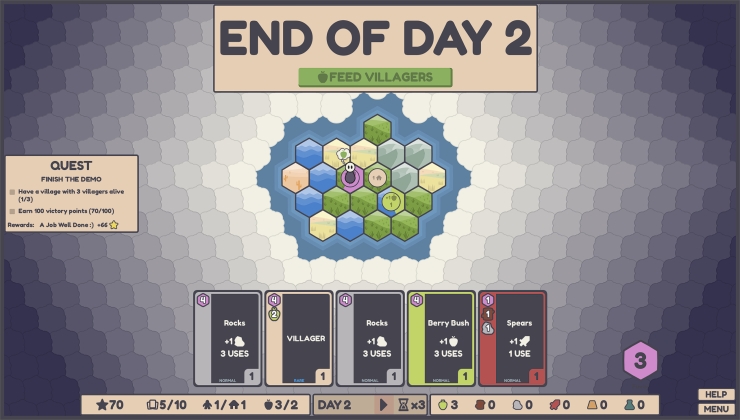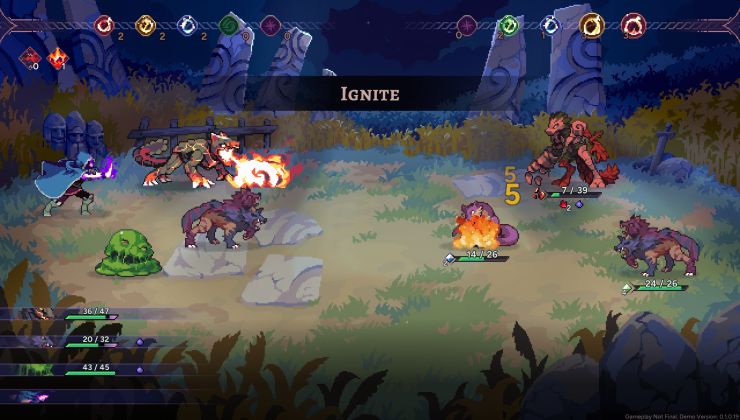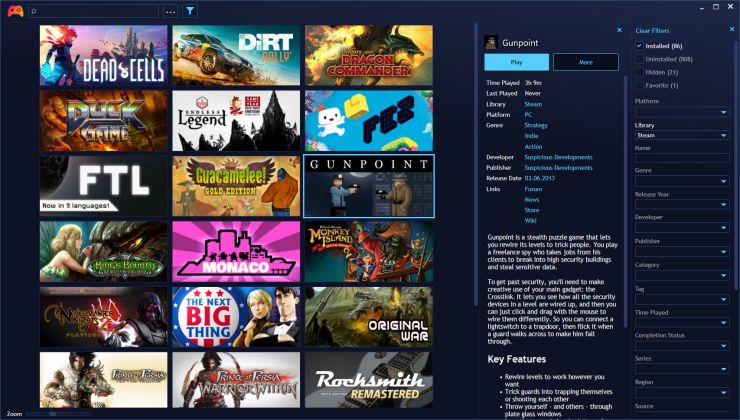In a new post titled "Cheaters Will Never Be Welcome in Dota", Valve mentioned how they managed to get a whole lot of cheaters to show themselves and then gave them a swift boot to the buttocks.
Valve mentioned how they managed to ban 40,000 cheaters that were using third-party software over the last few weeks. How though? It's actually quite clever! They created a honeypot to trap people, and similar to a way you used to be able to fight some spam bots on website registration forms.
This third-party cheating software was able to show people things they weren't supposed to see during normal play, giving them an unfair advantage. So Valve added a bit that no one should see, which this cheating software showed people and so Valve could then have "extremely high confidence that every ban was well-deserved".
Valve make it clear that while the initial ban wave was "particularly large", it's just all part of their ongoing effort to remove cheaters from Dota 2, which is usually done in secret but they wanted a public example of their effort.
Good job Valve.
Dota 2 is free to play on Steam.
I also play GTA 5 a lot, so you get the idea.
Bans shouldn't be permanent, I can't imagine a 5-year ban being less deterrent than a permaban. I think a warning (1 month or couple weeks ban) would be better all around, actually, as you don't use the atomic option right away and leave some room for escalation, so that the cheater knows they have to behave, but I understand that cheats are hard to detect... And some cheaters are not like the others: clueless people, serial cheaters, and cheat developers. The last two categories are the more dangerous, and both will just move on to a new account if one gets banned. VAC bans are not instant to make it harder for the last category.
I wonder if some "serial" cheaters do it in order to level up accounts to sell them, or to sell dropped items on a secondary market?
Last edited by MayeulC on 23 Feb 2023 at 1:09 pm UTC
Biggest problem with VAC is that it runs in userspace and thus is extremely easy to hide from. In short, VAC is an old antivirii app that is fed with cheat signatures. And the darker sides of the net is chock filled with binary obfuscators and all sorts of software that make using checksumming to find cheats pretty useless. You need to look at what the software really does instead. If a user is using a software connected to the mouse input AND the screen, well, chances are extremely high someone is cheating.
It is also very easy to find cheaters using "AI" or what it really is, pattern matching. But the problem Valve has is finding a pool with clean players, at all levels. Its current attempt is like making an AI find mugs by throwing kitchenware catalogs at it and expecting it to find out what mugs are by itself, not going to happen. Only by giving it a large clean base of matches to then compare the bottomless pit of cheaters with will VACnet be able to discern who is cheating and who is playing legit.
Dota is free so all 40 thousands cheaters came back the same day on new account. In the old days punkbuster was giving hardware bans instead. Wikipedia says hardware GUID can be spoofed so it might be the reason why it's not in use anymore. I don't think this ban wave will change anything.
You could use payment info as a "hardware" ID instead. People spoofing credit cards have much bigger problems than being beaten in video games.
When people play a game, we call them Players. When people purposefully break a game in order to harass, bully, and deceive Players, we call them cheaters.
Ban them. Or, iirc, do like GTA-V did and exile them to a special server full of all the other cheaters. Or, my final idea, bury them at the high tide mark and let the crabs have 'em.
Last edited by Nanobang on 23 Feb 2023 at 6:42 pm UTC
It was a technical challenge, and actually a very interesting one for me in my younger years (was about 14-16 years old back then, since that the cheating software and anti cheat came a long way and it would be a lot more complicated today). Yes, we still learned assembler and learned how memory actually works back in the days :D.
Using them isn't fun though, not today and wasn't back then (besides that they worked, that they did work actually was fun to me as a proof of concept :D). Multiplayer is about measuring your skills against others, having an unfair advantage isn't a challenge, and isn't actually fun.
But I guess some people just want to be on the scores lacking skills and don't mind. I am rather happy to celebrate any good play I do fairly than using cheats. Even though, getting fewer by the year, I'm close to my 40th birthday and those youngsters just .. have very fast reactions. Compared to me anyway :D. I soon will need "i'm a dad" opponents to come out on top. Are there leagues for that? :D.
Last edited by STiAT on 23 Feb 2023 at 6:47 pm UTC
Dota is free so all 40 thousands cheaters came back the same day on new account. In the old days punkbuster was giving hardware bans instead. Wikipedia says hardware GUID can be spoofed so it might be the reason why it's not in use anymore. I don't think this ban wave will change anything.
You could use payment info as a "hardware" ID instead. People spoofing credit cards have much bigger problems than being beaten in video games.
Prepaid cards, gift cards, etc... Changing payment info is trivial. Limiting payment options removes a large chunk of the player base (not everyone everywhere has access to credit cards).
Not to mention this game is free, so no payment is needed in the first place.
While i actually developed cheating software (wallhacks, aimbots etc.), I never released any to the public and never really used them besides testing them.
It was a technical challenge, and actually a very interesting one for me in my younger years (was about 14-16 years old back then, since that the cheating software and anti cheat came a long way and it would be a lot more complicated today). Yes, we still learned assembler and learned how memory actually works back in the days :D.
Using them isn't fun though, not today and wasn't back then (besides that they worked, that they did work actually was fun to me as a proof of concept :D). Multiplayer is about measuring your skills against others, having an unfair advantage isn't a challenge, and isn't actually fun.
But I guess some people just want to be on the scores lacking skills and don't mind. I am rather happy to celebrate any good play I do fairly than using cheats. Even though, getting fewer by the year, I'm close to my 40th birthday and those youngsters just .. have very fast reactions. Compared to me anyway :D. I soon will need "i'm a dad" opponents to come out on top. Are there leagues for that? :D.
I fully understand the challenge also the other way around, when I had a CS:S server (for 8 years) me and a friend developed a ton of plugins to manage and blacklist cheaters and make their life a nightmare by monitoring them. We also had a remote client console with alerts when nobody from the team was playing. It was fun too see them rage quit because everything was logged so when reconnecting with the same IP or SteamId everything was put back (K/D ratio, money, names), network stats were also monitored when choke and latency where out of thresholds the player was slowed down automatically.
I fully understand the challenge also the other way around, when I had a CS:S server (for 8 years) me and a friend developed a ton of plugins to manage and blacklist cheaters and make their life a nightmare by monitoring them. We also had a remote client console with alerts when nobody from the team was playing. It was fun too see them rage quit because everything was logged so when reconnecting with the same IP or SteamId everything was put back (K/D ratio, money, names), network stats were also monitored when choke and latency where out of thresholds the player was slowed down automatically.
Fun part is, when I turned 18 I actually started to work for a server provider and took the other route as well. We provided customers with tools to monitor players and know who they watch when they're online. Without client side tools it's damn hard to accurately detect them though without a human watching. We had automatic ban too, but that failed a few times too. I had an example of a really good player which I got the proof by watching him play. He really played as if he'd see and aim through walls, though it was his playstyle to start attacking through corners by sound, and sometimes by chance since he knew players would camp there and sniper through walls. He was just a really good player, but I can confirm - the performance he had was not because of cheats because I watched him play live on a LAN, my software identified him as a cheater though.
Software can fail as much as people can. Unless you're on the client as Valve seems to have managed. Then you can be pretty accurate if you know what you're targeting.
Last edited by STiAT on 23 Feb 2023 at 7:48 pm UTC
My concern is that this tactic may not work again because now it's public.Might have become known to the cheaters whether they went public with what they did or not. But it might be difficult to avoid, too--sounds like it works based off one of the fundamental "cheaty" things to do, and not even the mechanics of it but just the raw ability to see things you're not supposed to. So it doesn't matter what method cheaters are using, if they can see things others can't and you put some stuff others can't see, they'll react to it differently unless they spend so much time second-guessing everything they see that they'd be better off not cheating . . .
He really played as if he'd see and aim through walls, though it was his playstyle to start attacking through corners by sound, and sometimes by chance since he knew players would cam there and sniper through walls.
I've never been good at any FPS, but I once was called a cheater because I knew where and when I needed to jump and throw a grenade at the very beginning of a round to catch the one guy who sure was running into a certain direction from the start of the level. Fun. :)
He really played as if he'd see and aim through walls, though it was his playstyle to start attacking through corners by sound, and sometimes by chance since he knew players would cam there and sniper through walls.
I've never been good at any FPS, but I once was called a cheater because I knew where and when I needed to jump and throw a grenade at the very beginning of a round to catch the one guy who sure was running into a certain direction from the start of the level. Fun. :)
Neither was I. It's fun, but I'm terrible at those kind of games :D. Except for MOHAA and CS 1.6 as a Sniper.. no idea why, but there I was really good. Nowdays, I just have too bad reactions for that. I was known to melee-sniper... I'm dead now before I think on trying.
Last edited by STiAT on 23 Feb 2023 at 7:54 pm UTC














 How to set, change and reset your SteamOS / Steam Deck desktop sudo password
How to set, change and reset your SteamOS / Steam Deck desktop sudo password How to set up Decky Loader on Steam Deck / SteamOS for easy plugins
How to set up Decky Loader on Steam Deck / SteamOS for easy plugins
See more from me